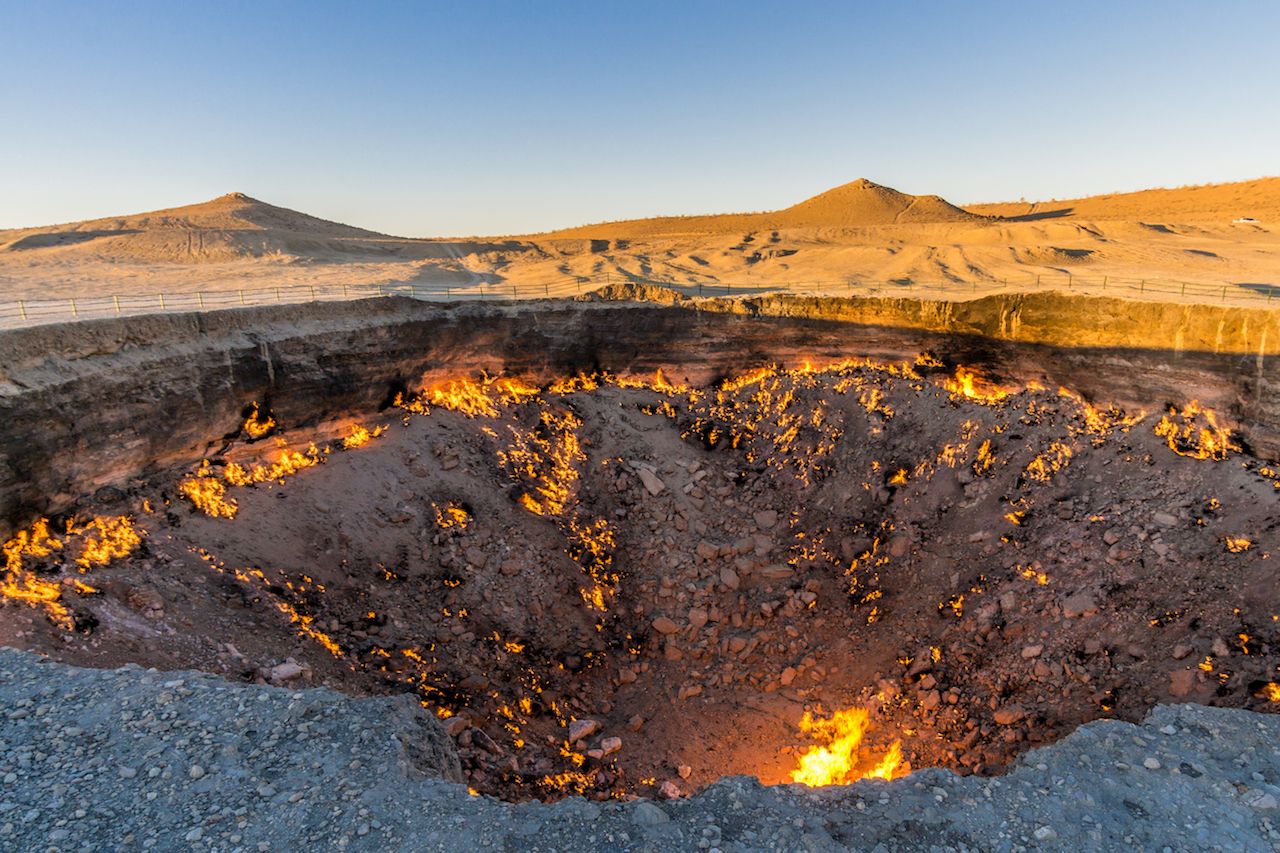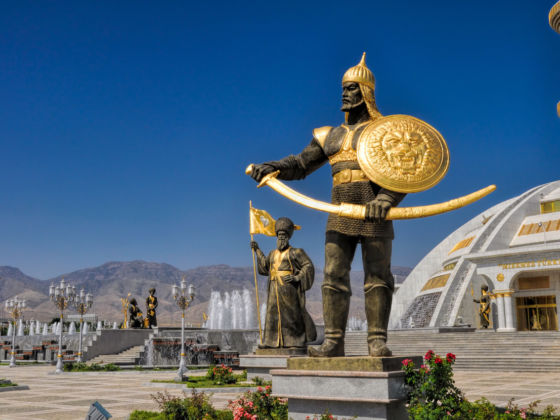There’s a fiery pit in Turkmenistan’s Karakum Desert that’s been ablaze since 1971. Ever since Soviet geologists seeking oil mistakenly drilled into a cavern filled with natural gas. The rig collapsed, the pit opened up, and the scientists set it on fire to burn off the dangerous, leaking methane gas. That was over 40 years ago.

Photo: JoostP/Shutterstock
This scorching site is the Darvaza gas crater, but locals are more likely to call it the “Door to Hell” for obvious reasons. The same reasons that have intrigued travelers and made the massive crater a must-see for the intrepid in Central Asia.


